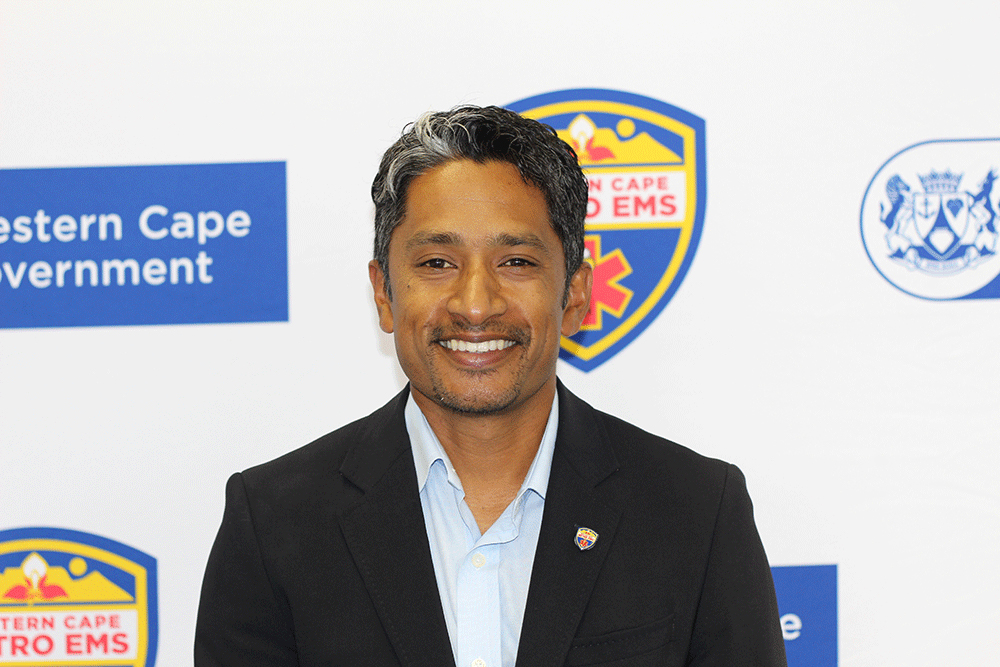A system from Dimension Data has helped the West Cape Government provide an ambulance service that delivers a more efficient emergency response.
The ambulance service of the Western Cape Department of Health is one of the largest ambulance services in South Africa.
It serves a population of over six million and covers an area of almost 130,000 square kilometres.
“We transport between 45 to 50,000 patients a month,” said Dr Shaheem de Vries, of the Western Cape Government.
“It’s critical to get the right people to the right place, at the right time.
“When you’re moving this many patients, efficiency and speed are important.”
Besides responding to medical emergencies, the organisation’s HealthNET service also provides non-emergency patient transport services.
“We move patients across the province to central or regional hospitals and other facilities,” said Dr de Vries.
“This could be for services at academic institutions or to have specialised procedures carried out.”
Western Cape EMS wanted to improve its response times and quality of service.
To achieve these ambitions, it needed to look at creating efficiencies in the critical systems used in its communications model.
“We’re a medical organisation and we focus on patient care,” said Dr de Vries. “We needed a partner who could interpret our needs and create a solution that would deliver better efficiencies for us.”
After consulting with Western Cape EMS, Dimension Data proposed and implemented a call-taking and dispatch solution. Dimension Data created a hosted infrastructure on its private Challenge cloud platform for centralised deployment.
This supports Western Cape EMS’s six emergency control centres and new mobile devices in its ambulances.
The solution is underpinned by a multi-protocol label switching (MPLS) wide area network (WAN) and a security layer.
“An emergency call to our contact centre is routed to the most suitable call taker,” said Dr de Vries. “The call taker captures the location and other details using an intuitive map and map search functionality.
“The system finds the most appropriate dispatcher and feeds them this information in real-time.”
The incident and patient information are stored directly on the web server, which allows for centralised data storage.
From this point, the dispatcher can select and assign the closest ambulance and response unit.
“The ambulance’s location is constantly tracked and updated,” said Dr de Vries.
“The response team can follow the most efficient route using a mobile tablet in the front of the ambulance, while receiving updates or sending other requests to the dispatcher.”
In the back of the ambulance, paramedics use a device to electronically receive and update clinical records about the patient’s condition.
“While this doesn’t affect performance, it’s a critical function and will impact the immediate care of the patient – it also allows us to analyse the quality of the care at a later stage,” said Dr de Vries.
From the time an incident is logged to the moment the patient is handed over to staff at a hospital or medical facility, the status and progress of the incident are tracked and captured for further analysis and insight.
For the non-emergency patient transport services using HealthNET, Dimension Data streamlined a booking system that simplified communication and improved the service.
“Patients can book transport when visiting a facility and receive an SMS to confirm dates, time of arrival and so forth,” said Dr de Vries.
“If the patient cannot make an appointment, it just takes a simple SMS to cancel the service.”
Since the solution went live, Western Cape EMS has reported significant improvements in its services to the people of the Western Cape.
Accuracy and dispatch response times have greatly improved; there have also been reduced mobilisation times and improvements in journey times.
The network has been implemented across the entire province since.
“It’s important to understand that this solution aims to address a need in a developing country with incredibly austere environments and socio-economic challenges,” said Dr de Vries.
“Both my team and those within Dimension Data have really owned the challenge.
“We’ve ended up with a solution that’s far better than the one we originally anticipated.”
While it’s difficult to predict the long-term impact the solution will have on the way the Department of Health operates, Dr de Vries agrees that Western Cape EMS has more detailed access to information.
“In the future, we’ll look at every element of emergency care and how technology can make it more efficient and reliable,” he said.
“Additionally, with improved access to business intelligence we’ll be able to respond better to patients’ future needs.”
Click below to share this article

